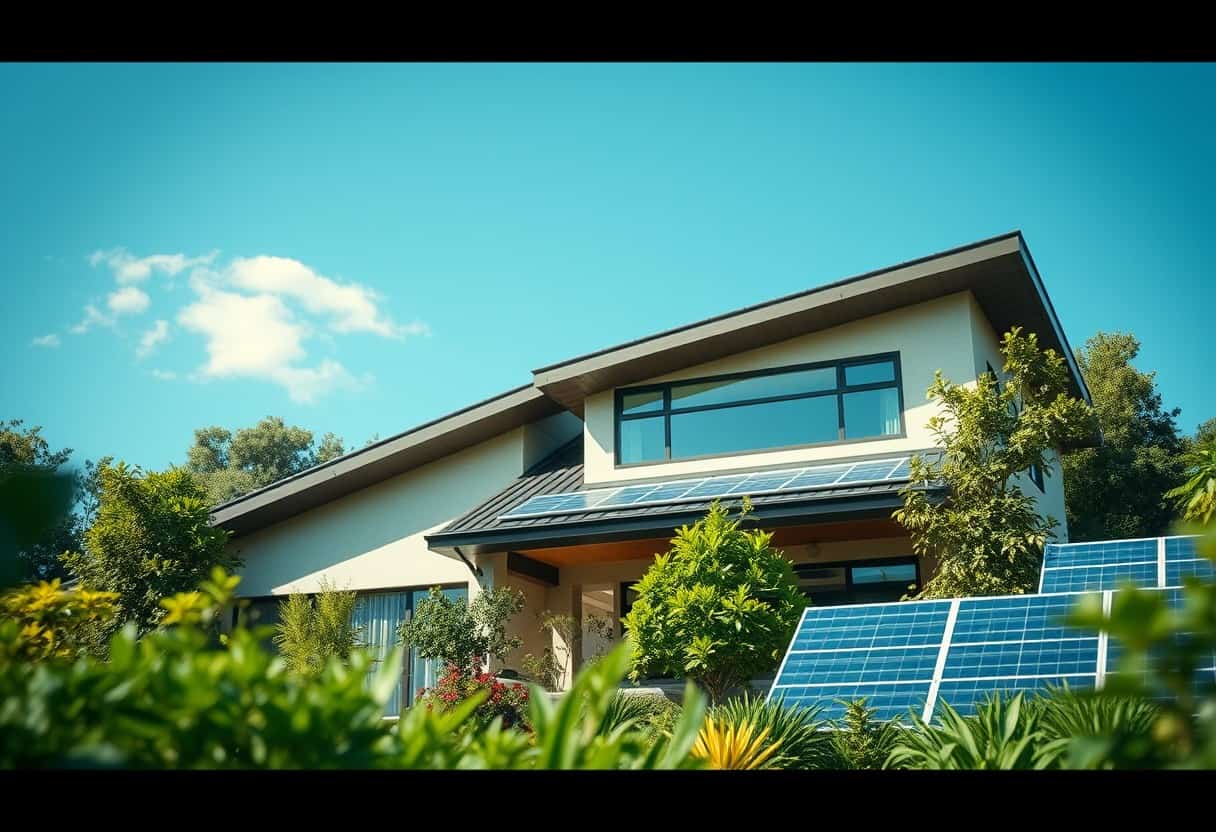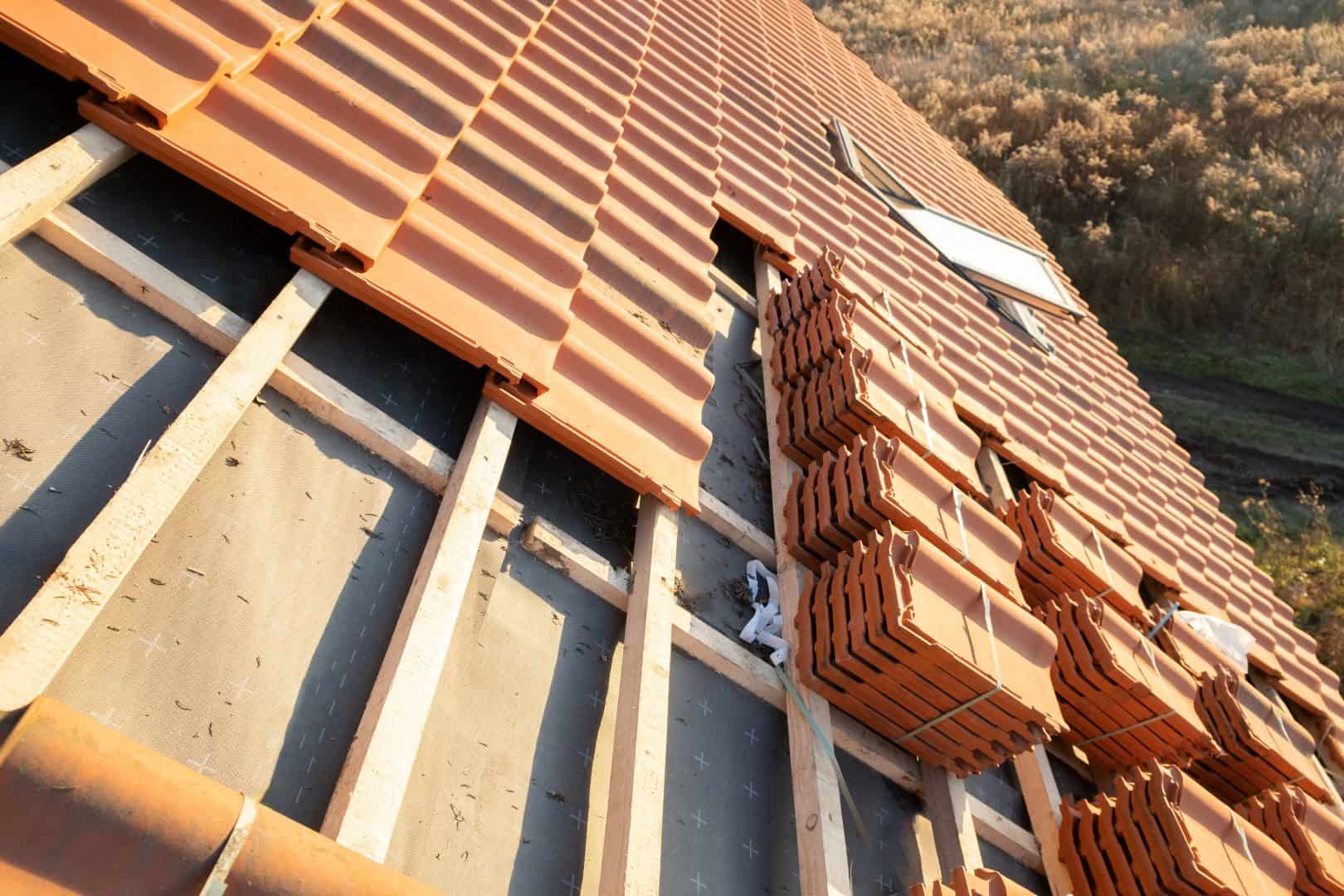Are there energy-efficient roofing options?
Fill Out The Form And We'll Get Back To You

Over the past few years, you may have noticed a rising focus on energy efficiency in home improvements, particularly in roofing options. Choosing the right energy-efficient roofing can significantly reduce your energy bills, increase your home’s comfort, and even enhance its value. With a variety of materials available, including reflective shingles, metal roofs, and green roofs, you can make a well-informed decision that benefits both your wallet and the environment. In this post, you will discover the most effective energy-efficient roofing solutions tailored to your needs.
Understanding Energy-Efficient Roofing
Before you investigate into roofing options, it is imperative to grasp what energy-efficient roofing entails. Energy efficiency in roofing refers to materials and systems that reduce the amount of energy required to heat and cool your home. This is achieved through various techniques such as reflecting sunlight, improving insulation, and utilising materials that retain less heat. By selecting the right roofing, you can significantly lower your energy bills while contributing positively to the environment.
What is Energy Efficiency in Roofing?
EnergyEfficient roofing systems are designed to minimise the reliance on heating and cooling systems, consequently reducing energy consumption. These roofs often feature special coatings or materials that reflect sunlight, lowering roof surface temperatures and decreasing the heat absorbed by your home. Proper insulation and ventilation are also fundamental components of energy-efficient roofs, as they help maintain a stable indoor temperature year-round.
Benefits of Energy-Efficient Roofs
EnergyEfficient roofs provide numerous advantages, including lower energy costs, increased comfort, and a reduced carbon footprint. By investing in these systems, you’re not only enhancing the thermal performance of your home but also protecting the environment. With effective roof insulation and reflective materials, your HVAC system will operate less frequently, leading to significant savings on your energy bills.
The savings you achieve from energy-efficient roofing can be quite remarkable, as many homeowners report reductions of up to 30% in their heating and cooling expenses. Additionally, such roofs often qualify for tax credits or rebates, making the initial investment even more appealing. Furthermore, with the added benefit of improving your home’s resale value, energy-efficient roofing is not just an eco-friendly choice but also a wise financial decision for your future.
Types of Energy-Efficient Roofing Materials
If you are considering making your home more energy-efficient, exploring the various types of roofing materials available is crucial. Modern technology has introduced a myriad of options that can not only reduce your energy consumption but also enhance your home’s overall aesthetic appeal. Here are some of the key materials you might consider:
| Material Type | Description |
|---|---|
| Reflective Roofing | Materials that reflect sunlight, reducing heat absorption. |
| Insulating Roofing | Options that provide effective insulation to maintain temperature. |
| Metal Roofing | Durable and reflective roofs that can save on energy costs. |
| Green Roofing | Living roofs that provide natural insulation and improve air quality. |
| Solar Tiles | Integration of solar technology directly into roofing materials. |
Reflective Roofing Materials
One of the most effective types of energy-efficient roofing is reflective roofing materials. These materials are designed to reflect a significant portion of sunlight, thereby keeping your roof and building cooler during the hot months. By reducing the amount of heat absorbed, you can decrease the need for air conditioning, leading to lower energy bills. Reflective coatings, such as white or light-coloured shingles, are commonly used and can easily be applied to existing roofs, providing a quick upgrade to your energy efficiency.
Another notable benefit of reflective roofing is its ability to extend the lifespan of your roofing materials. By minimising heat absorption, you reduce the thermal expansion and contraction that can wear down your roof over time. Moreover, reflective roofs contribute to urban heat island mitigation, making them an environmentally friendly choice for both individual homeowners and the community at large.
Insulating Roofing Options
For those looking to enhance the insulation of their home, insulating roofing options can be a game-changer. These materials are designed specifically to prevent heat loss in the winter and keep homes cooler in the summer. Insulating roofs often involve a combination of materials such as foam, fibreglass, or mineral wool, each providing their unique benefits to your home’s energy efficiency.
Notably, the proper installation of insulating materials ensures that your home remains comfortable year-round, minimising reliance on heating and cooling systems. This not only helps in lowering your energy bills but also contributes positively to your carbon footprint. A well-insulated roof can considerably maximise comfort within your living spaces while significantly reducing your energy consumption.
Insulating roofing options can provide significant benefits for homeowners concerned about their energy usage. For instance, high R-value materials are necessary to limit heat transfer, ensuring your home remains comfortable regardless of external temperatures. Additionally, proper insulation helps protect your roofing structure from moisture and decay, leading to a longer lifespan for your roof. Investing in insulating roofing materials is not only an eco-friendly choice but also a financially savvy one that can pay off over time through reduced energy costs and increased property value.
Installation and Maintenance Considerations
Some factors to consider when installing energy-efficient roofing options include the type of materials employed and the method of installation. A professional installation can significantly enhance the performance and longevity of your roof, ensuring that it effectively reflects sunlight and provides excellent insulation. It’s crucial to choose materials that are not only energy-efficient but also compatible with your existing structure and local climate. Poor installation can lead to air leaks and compromised insulation, ultimately negating the benefits of your energy-efficient choice.
Choosing the Right Contractor
On selecting a contractor for your roofing project, it is imperative to ensure they possess the necessary qualifications and experience in handling energy-efficient systems. Look for professionals with a strong portfolio showcasing their prior work with eco-friendly roofing solutions. Additionally, they should be familiar with current building codes and regulations, as well as any specific requirements related to energy efficiency in your area. Don’t hesitate to ask for references and reviews, as this can greatly influence your decision and provide peace of mind regarding your investment.
Regular Maintenance for Longevity
Installation of energy-efficient roofing options is just the first step; regular maintenance is vital for ensuring their longevity. It is advisable to schedule routine inspections that can identify potential issues such as damage or debris accumulation that may affect performance. Neglecting maintenance can lead to detrimental consequences, including reduced energy efficiency and potentially costly repairs. By proactively managing your roof’s condition, you can maintain its energy-saving benefits and prolong its lifespan.
It is important to keep your roof clean and well-maintained. This involves removing debris like leaves and branches that can trap moisture, leading to rot or mould. You should also check for any signs of wear or damage, such as cracked tiles or rusted metal, as these can compromise your roof’s integrity and effectiveness. Regular maintenance will not only keep your roof looking good but will also help you avoid expensive repairs in the long run, ensuring that you maximise the return on your investment in energy-efficient roofing.
Cost Analysis of Energy-Efficient Roofing
Initial Investment vs. Long-Term Savings
Roofing materials that promote energy efficiency typically require a higher initial investment compared to traditional roofing options. However, it is crucial to consider the long-term savings associated with these materials. Over time, energy-efficient roofs can significantly reduce your heating and cooling costs, resulting in a faster return on investment. It’s crucial to conduct a thorough cost analysis that factors in your local climate, energy prices, and the lifespan of the roofing materials you choose to ensure that the extra expense is justified.
Moreover, you must account for potential maintenance costs and the longevity of the roofing system. Investing in quality energy-efficient roofing can lead to lower maintenance expenses. When you factor in the energy savings and reduced need for repairs, you may find that your initial outlay is mitigated by the cost-effectiveness of the roof over the years. It’s a prudent approach to weigh both short-term and long-term financial implications before making your choice.
Government Incentives and Rebates
On the other hand, there are various government incentives and rebates available that can help alleviate some of the financial burdens associated with energy-efficient roofing. Many local and national government programmes encourage homeowners to invest in energy-saving solutions by offering tax credits, grants, or rebates specifically for energy-efficient home improvements. This financial support can significantly reduce your upfront costs and enhance the overall value of your investment.
Investment in energy-efficient roofing not only benefits your pocket but also contributes to environmental sustainability. Additionally, you should keep an eye on local regulations and programmes designed to promote energy efficiency; these can provide you with opportunities to save even more. Engaging with your local government or energy provider can reveal additional options that can further incentivise your purchase. Do not forget, a well-informed decision can lead to both economic savings and ecological benefits, making it a win-win scenario for you.
Environmental Impact of Energy-Efficient Roofing
Despite the initial investment required, transitioning to energy-efficient roofing can significantly reduce your environmental impact. By opting for materials that reflect rather than absorb heat, such as light-coloured or “cool” roofs, you not only enhance the energy efficiency of your home but also contribute to lowering the urban heat island effect. This phenomenon occurs when urban areas experience higher temperatures than their rural surroundings, leading to increased energy consumption for air conditioning and heightened greenhouse gas emissions. By choosing the Best Energy-Efficient Roofing | Types of Cool Roofs, you are making a conscious effort to minimise your carbon footprint while improving indoor comfort.
Moreover, energy-efficient roofing plays a crucial role in promoting sustainable living. The materials used in these roofing systems are often sourced from recycled or environmentally friendly resources, leading to less waste and lower consumption of new raw materials. As such, you are not only benefiting yourself through reduced energy bills but also supporting a movement towards more responsible building practices that protect the planet and its resources for future generations.
Reducing Carbon Footprint
On choosing energy-efficient roofing, you actively contribute to reducing your carbon footprint. Traditional roofing materials can significantly trap heat, requiring more energy for cooling your home. However, energy-efficient options like reflective tiling or metal roofs can decrease your reliance on air conditioning systems, ultimately resulting in lower energy consumption and fewer emissions. Each small adjustment you make affects the larger picture, helping mitigate climate change and promoting a healthier environment.
Sustainable Building Practices
To further advocate for sustainability, incorporating energy-efficient roofing aligns with broader sustainable building practices. These techniques aim to create buildings that minimise environmental impact while maximising efficiency and comfort. This includes utilizing renewable materials, promoting energy conservation, and encouraging the use of local resources to reduce transportation emissions. By enhancing the energy performance of your home through thoughtful roofing choices, you’re supporting an eco-friendly lifestyle that benefits both you and the environment.
It is vital to recognise that sustainable building practices extend beyond just roofing choices. They encompass a holistic view of construction and renovation, considering factors such as energy-efficient appliances, insulation, and water conservation systems. Each element contributes to a synergy that not only enhances your living experience but also fosters a greater responsibility towards the Earth. Embracing these practices can lead to a more sustainable future, with reduced waste and a comprehensive approach to environmental stewardship.
Future Trends in Energy-Efficient Roofing
Once again, the landscape of roofing is evolving with a clear emphasis on energy efficiency. As you explore your options, it is imperative to stay informed about the latest trends shaping this sector. A notable source for learning more is Everything You Need to Know About Energy-Efficient Roofing. Here, you can discover insights that will help you make informed decisions about your next roofing project while considering both environmental impacts and practicality.
Innovative Roofing Technologies
Roofing technologies have made considerable strides towards enhancing energy efficiency. With materials like reflective coatings, solar tiles, and green roofs gaining popularity, you now have access to an impressive array of choices that can significantly decrease energy consumption. These innovations not only improve the thermal performance of your home but also contribute to its aesthetic appeal, thereby increasing its market value.
Widespread Adoption and Its Implications
With the increasing awareness surrounding climate change, the widespread adoption of energy-efficient roofing technologies offers both challenges and benefits. You are likely to witness a growing emphasis on sustainability across housing standards and regulations. As homeowners, you might find yourself opting for roofing solutions that not only align with your values but also provide long-term savings on energy bills.
Technologies such as energy-efficient roofing are making waves, with many people becoming prioritised for sustainability and energy savings, creating a ripple effect in the market. If you venture into energy-efficient options for your home, you embrace a solution that can lead to reduced home energy demands, lowering your carbon footprint. The positive aspect is that as more people adopt these technologies, you will likely benefit from advancements in material quality and reductions in costs, making it an accessible choice for the average homeowner.
Conclusion
So, as you consider your roofing options, it’s vital to recognise the substantial benefits of energy-efficient solutions. Incorporating these types of roofs not only enhances your property’s insulation but also reduces your energy consumption and lowers your utility bills. When you invest in materials such as metal, tile, or specially coated asphalt shingles, you are making a choice that can contribute significantly to both environmental sustainability and your long-term savings.
Moreover, by opting for energy-efficient roofing, you improve the overall aesthetics and value of your home. Ensure you consult with professionals to select the best materials suited to your climate and needs. Recall, a well-chosen roofing option can lead to increased comfort in your living space while contributing positively to the planet and your purse.
FAQ
Q: Are there energy-efficient roofing options available?
A: Yes, there are several energy-efficient roofing options available that can help reduce energy consumption and lower utility bills. Some popular choices include reflective roof coatings, cool roofs, and green roofs. Reflective coatings can enhance the energy efficiency of existing roofs by reflecting sunlight, while cool roofs are designed to reflect more sunlight and absorb less heat. Green roofs provide insulation and help to reduce urban heat island effects.
Q: How do energy-efficient roofs contribute to environmental sustainability?
A: Energy-efficient roofs play a significant role in environmental sustainability by reducing energy consumption for heating and cooling, thereby lowering greenhouse gas emissions. By minimising the amount of energy needed for climate control, energy-efficient roofing options contribute to a decrease in reliance on fossil fuels. Additionally, green roofs contribute to biodiversity, manage stormwater, and improve air quality, further enhancing their positive environmental impact.
Q: What are the cost implications of installing energy-efficient roofing?
A: While the initial cost of installing energy-efficient roofing can be higher than traditional options, the long-term savings on energy bills often outweigh these upfront costs. Many homeowners find that energy-efficient roofs pay for themselves over time through lower heating and cooling expenses. Furthermore, various incentives and rebates may be available for energy-efficient home improvements, which can help offset initial installation costs and make these options more financially viable.
New Roof
The guys made a fantastic job of re-roofing our house. They were quick, courteous and excellent value for money.
Chimney Repair
We employed Wrights Roofs to repair our very old chimney – tht had seen better days. They carefully repaired, repointed and re-leaded our chimney which should last me out.
Solar Panel Installs
We had panels that needed putting onto our pitched roof. The guys from Wrights did a great job.
Roofs, Flat Roofs Chimneys and Solar Panels
If you need roof work on your home, please complete the form or call us today.

